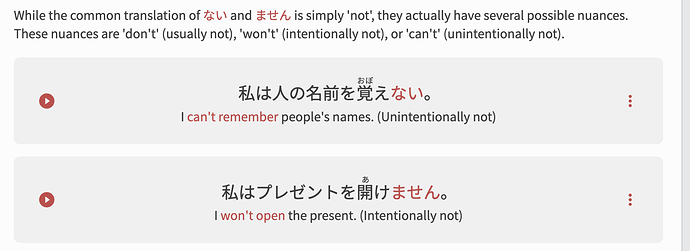う - Verbs (negative form)
Structure
Casual
座る + らない
歌う + わない
歩く + かない
話す + さない
打つ + たない
死ぬ + なない
飛ぶ + ばない
休む + まない
泳ぐ + がない
Exceptions:
ある → ない
Formal
座る + りません
座る + らない です
歌う + いません
歌う + わない です
歩く + きません
歩く + かない です
話す + しません
話す + さない です
打つ + ちません
打つ + たない です
死ぬ + にません
死ぬ + なない です
飛ぶ + びません
飛ぶ + ばない です
休む + みません
休む + まない です
泳ぐ + ぎません
泳ぐ + がない です
Exceptions:
ある → ありません
ないです



